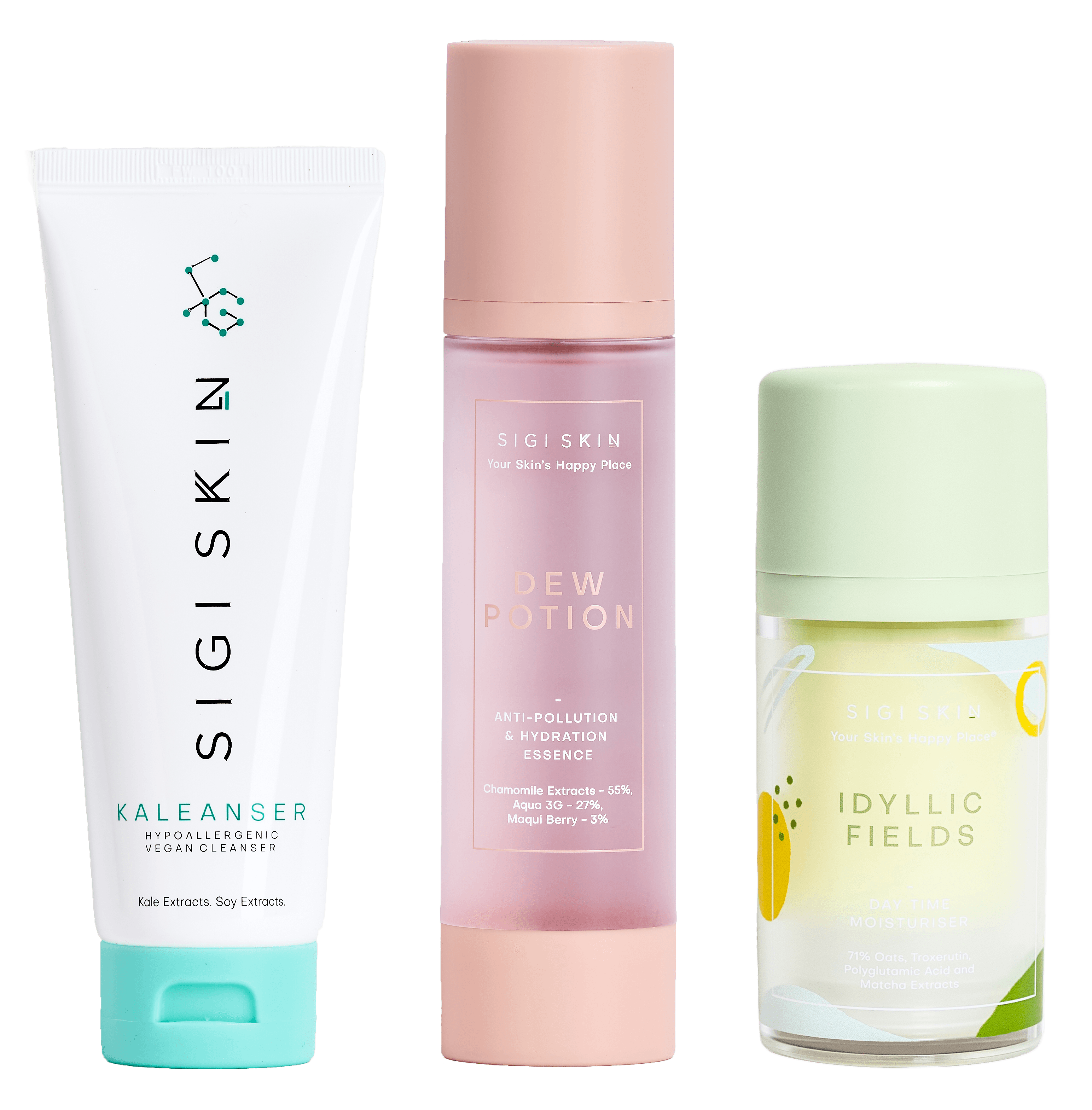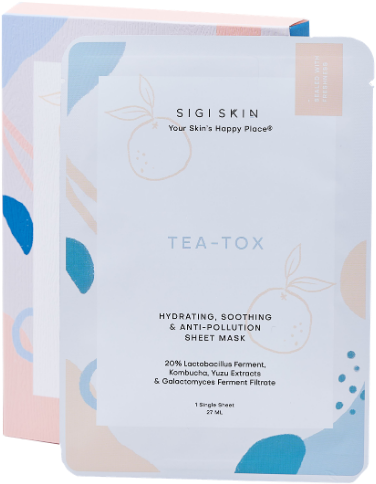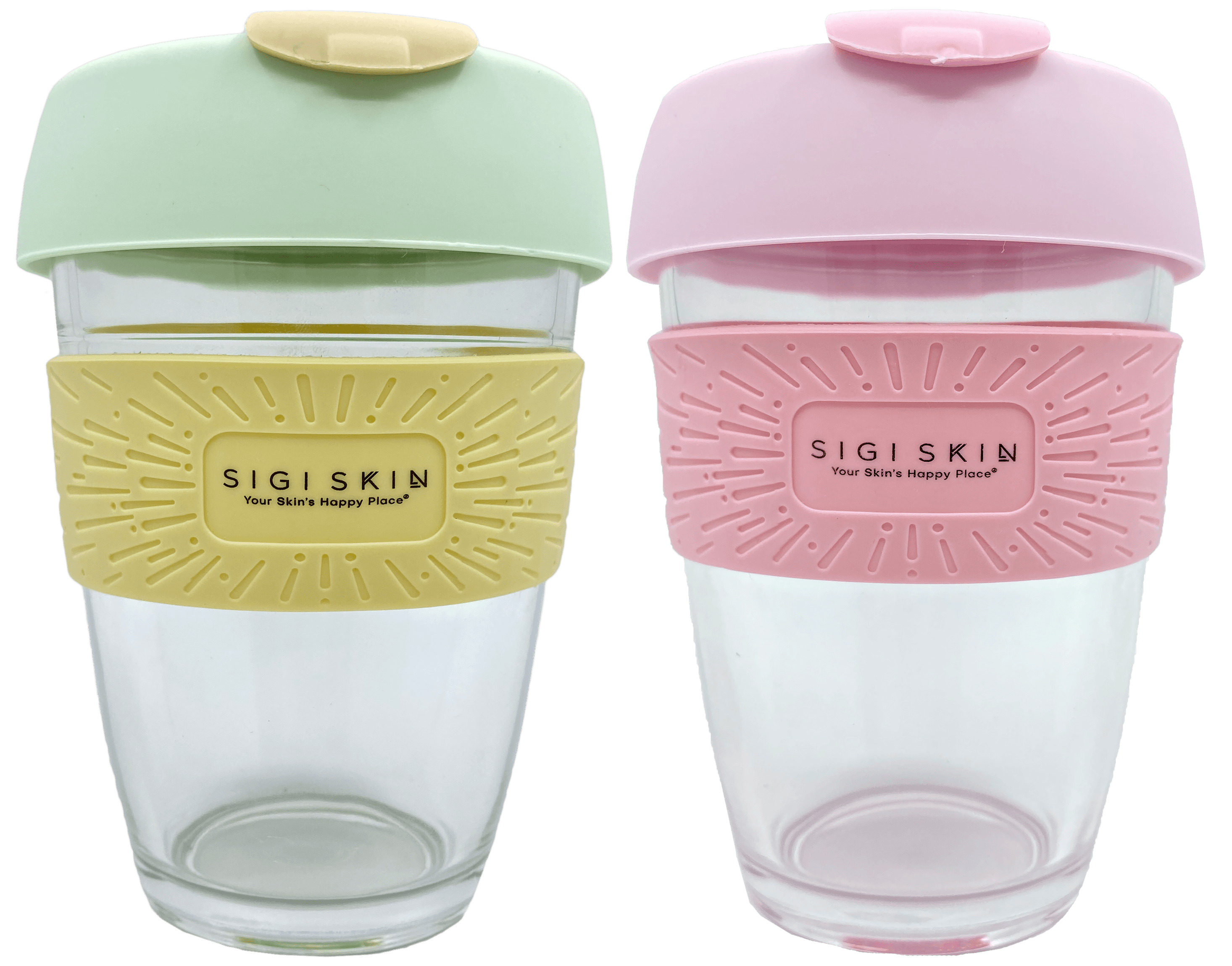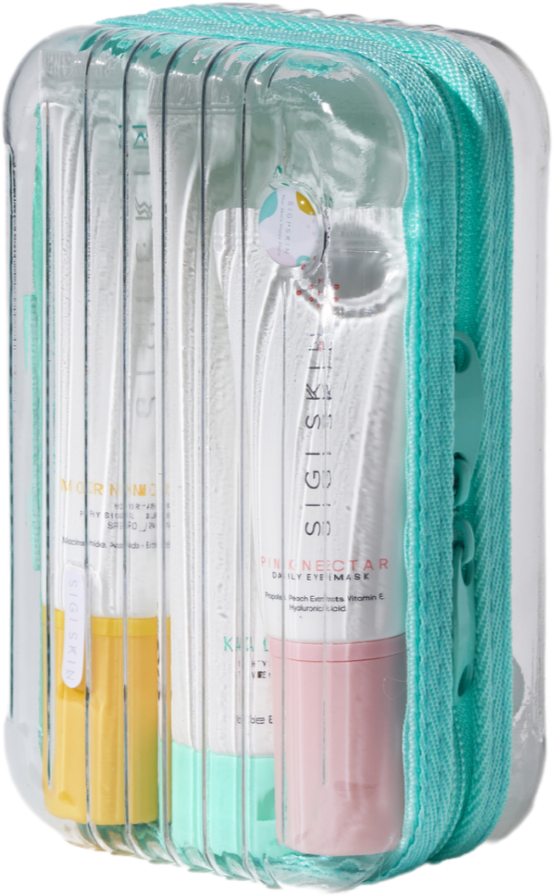Chemical Sunscreens versus Physical Sunscreens: What You Need to Know

When we sift through drugstores and quickly grab at the closest sunscreen in a hurry, little thought generally crosses our minds. We just assume it’s an easy fix to rub on our skin and protect our cells from the sun’s harmful rays. However, did you know that there are two fundamentally different kinds of sunscreen available to you today?
Before you go rubbing another sunscreen on your skin, it’s incredibly important to first learn about what you are using, as well as its future implications for your health, skincare, and overall aging process.
We’re first going to breakdown what chemical sunscreens and physical sunscreens are, moving into the pros and cons you should definitely start considering in the future. Trust us, your skin will thank you!
Chemical Sunscreens
Most common of sunscreens found on the shelves of beauty stores or pharmacies, chemical sunscreens contain organic (carbon-based) compounds, such as oxybenzone, octinoxate, octisalate, and avobenzone, which work together to essentially create a chemical reaction. Through this reaction, the added chemical change UV rays into heat, releasing the heat from the skin while preventing damaging burning. Chemical sunscreens can also be referred to as “chemical or organic absorbers.”
Although they might sound “organic” in composition, chemical sunscreens are made up of many chemical UV filters combat UVB rays, and have been proven to cause irritations, skin diseases, and other side effects.
Physical Sunscreens
Physical sunscreens, on the other hand, contain active mineral ingredients, such as titanium dioxide, or zinc oxide, working together on top of the skin to deflect and scatter damaging UV rays. Known as physical blockers, physical sunscreens are comprised of far fewer ingredients than chemical sunscreens, which makes them more compatible with different, sensitive skin types.
What You Need to Know
Now that we’ve looked at the definitions of these two different sunscreens, it’s time to look at the pros and cons, ultimately deciding a better option for you and your health. Sun damaged skin is often irreversible, so prevention is better than cure.
Here’s our breakdown of physical sunscreens versus chemical sunscreens.
- Less chemical sunscreen is needed to spread over the skin for protection
- More popular find in drugstores and other major convenient stores
- Studies have shown that chemical sunscreens can possibly cause and increase existing brown spots and discoloration due to the high skin temperature
- Can worsen aging spots
- Takes 20-30 minutes to effectively kick into motion
- Increases chance of chemical reactions in the skin, irritation, and stinging
- The higher the SPF, the higher the risk of irritation for sensitive skin types
- Re-application must be frequent to continue combatting the UV rays
- May clog pores for those with oily skin types
- May contribute to skin diseases and possibly cancer
- Offers sweeping protection against both UVA and UVB rays
- Protects UV rays the second it’s applied to the skin, no wait is required
- Lasts longer in the face of UV direct light
- Less likely to cause stinging irritation on the skin
- Better for those with heat-activated skin, deflecting heat given off by the sun without an on-skin reaction
- Less likely to be pore clogging
- Ideal for acne-prone skin
- Lasts longer in the bottle for future use
- Can sweat off and rub off more easily when completing physical activity
- Traditional physical sunscreens are thick, chunky to apply, and often leaving behind an obvious white cast.
- Is less available in drugstores etc. as the chemical counterpart
Overall, it isn’t a competition. Physical sunscreens provide additional protection, less dangerous chemical compositions, anti-aging support, and an easier spread for a more appropriate appearance. Let’s look in-depth at what’s offered to users by applying a physical sunscreen.
The Top 5 Benefits of Using a Physical Sunscreen
We don’t always have to turn to chemicals for the answers to our inconveniences today. Sometimes, using natural minerals and ingredients is just as effective, providing a safer environment for our health and our skin. The closer we get to nature, the happier our health. That’s what we believe in the production of our physical sunscreen.
If you’re considering switching over to this kind of sunscreen compound, here are the top 5 benefits of applying physical sunscreen solution:
- Suitable for Pregnant Women :
Do you know the there are some chemical UV filters that pregnant women should avoid? Oxybenzone is one of the most common chemical UV filters in the market, but it is one that pregnant women should avoid. In some research studies, oxybenzone has been linked to low birth weight in female infants. While these studies could not exactly place oxybenzone as the sole reason for low birth weight, there is no reason to put your baby at risk if there is a viable alternative.
- UVA & UVB Protection:
Most sunscreen offers just UVA protection in the form of chemical reactions. With physical sunscreen, your skin is protected from both types of rays, which ensure minimized exposure to skin cancer and other harmful types of sun rays.
- Mineral Ingredients:
Instead of settling for parabens and other terrible chemical compounds that have been proven time and time again to damage your skin, physical sunscreen relies on just a few natural minerals to keep your skin protected. That’s why it comes with a vegan seal of approval for anyone looking to go all natural.
- Sensitive Skin Support:
Millions of people every single day live with sensitive skin and skin irritations. Rubbing more chemicals on this skin isn’t going to do it any favors. That’s why a sunscreen with just a few, naturally occurring ingredients is compatible with people that suffer from sun sensitivity, chlorine sensitivity, or any other kind of skin irritation that can be common during the summertime.
- Longer-Lasting Protection:
Lastly, this kind of sunscreen has been proven to last longer on the wearer. Since chemical sunscreen burns away with each chemical reaction, it has a shorter effectiveness before more needs to be applied (not to mention, it requires more time to kick in). With physical sunscreen, as the physical protective layer is applied, it’s immediately effective and lasts much longer on the skin before more needs to be applied. It’s a better alternative for those who don’t want to chance it.
Sigi Skin
Our vegan sunscreen helps prevent premature aging by protecting your skin from UVA and UVB rays, as well as environmental aggravations. Comprised of a light, whipped texture that blends into any skin type with effortless ease, it leaves absolutely no trace, going into motion the second it’s used.
Traditional physical sunscreens come with that quintessential white goop that often leaves behind residue on the skin. It’s annoying, unattractive, and makes applying that kind of sunscreen on your own worrisome. We’ve created a physical sunscreen that is thin in texture, which makes it much easier to spread it around and provide an even coat. Leaving little to no white cast, it’s also a great alternative for any kind of skin color (and skin type), creating no sensitive skin reactions or alterations during its usage.
It also comprises an optimal amount of 4% niacinamide that helps to strengthen skin barrier, boost hydration levels, reduces blemishes and limits skin from free radical damage.
Our physical sunscreen leverages ingredients that contain known superfoods to even bring added health and support to your skin in the process. How do we do it? With avocado and acai extracts, both rich in Vitamin E and fatty acids. Together, they counteract the skin’s infrared rays while keeping your skin youthful and supple. And of course, it is made cruelty free and formulated without parabens, dye, sodium, and the list goes on.
Due to its thin hydrating texture, it can even double as a moisturizer, inspiring many to simply wear it as a 2-in-1 solution all summer long. Best applied in the morning as part of a skincare routine, gently massage it into your face, especially the high points during the summer. After that, you are good to go.
We create a full line of skincare products that are designed for everyone with a real purpose. We do it without adding in toxins and other lazy ingredients that can be deadly – including sodium lauryl sulphate, mineral oil, phthalates, dye, parabens, polyunsaturated oils, oxybenzone, coal tar, and so forth. We believe in leveraging Mother Nature in all of her glory, demonstrating what is possible when synthetic toxins are removed from the equation.
Ready to experience the power and natural wonder of a physical sunscreen? Ditch the chemicals and go vegan with your skincare this summer using our Sigi Skin Physical Sunscreen.








https://emc-mee.com/transfer-furniture-yanbu.html شركة نقل عفش بينبع
https://emc-mee.com/transfer-furniture-alkharj.html شركة نقل عفش بالخرج
https://emc-mee.com/transfer-furniture-buraydah.html شركة نقل عفش ببريدة
https://emc-mee.com/transfer-furniture-khamis-mushait.html شركة نقل عفش بخميس مشيط
https://emc-mee.com/transfer-furniture-qassim.html شركة نقل عفش بالقصيم
https://emc-mee.com/transfer-furniture-tabuk.html شركة نقل عفش بتبوك
https://emc-mee.com/transfer-furniture-abha.html شركة نقل عفش بابها
https://emc-mee.com/transfer-furniture-najran.html شركة نقل عفش بنجران
https://emc-mee.com/transfer-furniture-hail.html شركة نقل عفش بحائل
https://emc-mee.com/transfer-furniture-dhahran.html شركة نقل عفش بالظهران
https://emc-mee.com/transfer-furniture-kuwait.html شركة نقل عفش بالكويت
https://emc-mee.com/price-transfer-furniture-in-khamis-mushit.html اسعار شركات نقل عفش بخميس مشيط
https://emc-mee.com/numbers-company-transfer-furniture-in-khamis-mushit.html ارقام شركات نقل عفش بخميس مشيط
https://emc-mee.com/new-company-transfer-furniture-in-khamis-mushit.html شركة نقل عفش بخميس مشيط جديدة
https://emc-mee.com/transfer-furniture-from-khamis-to-riyadh.html شركة نقل عفش من خميس مشيط الي الرياض
https://emc-mee.com/transfer-furniture-from-khamis-mushait-to-mecca.html شركة نقل عفش من خميس مشيط الي مكة
https://emc-mee.com/transfer-furniture-from-khamis-mushait-to-jeddah.html شركة نقل عفش من خميس مشيط الي جدة
https://emc-mee.com/transfer-furniture-from-khamis-mushait-to-medina.html شركة نقل عفش من خميس مشيط الي المدينة المنورة
https://emc-mee.com/best-10-company-transfer-furniture-khamis-mushait.html افضل 10 شركات نقل عفش بخميس مشيط
https://emc-mee.com/%D8%B4%D8%B1%D9%83%D9%87-%D9%86%D9%82%D9%84-%D8%B9%D9%81%D8%B4-%D8%A8%D8%AC%D8%AF%D9%87.html
https://emc-mee.com/%D8%B4%D8%B1%D9%83%D8%A9-%D9%86%D9%82%D9%84-%D8%A7%D8%AB%D8%A7%D8%AB-%D8%A8%D8%AC%D8%AF%D9%87.html
https://zlidein.com/read-blog/97062
https://zlidein.com/read-blog/97063
https://zlidein.com/read-blog/97071
https://zlidein.com/read-blog/99326
https://www.skreebee.com/read-blog/110085
https://telegra.ph/%D8%B4%D8%B1%D9%83%D8%A9-%D9%86%D9%82%D9%84-%D8%B9%D9%81%D8%B4-%D9%85%D9%86-%D8%AC%D8%AF%D8%A9-%D8%A7%D9%84%D9%89-%D8%AC%D8%A7%D8%B2%D8%A7%D9%86-07-12
https://webyourself.eu/blogs/25649/%D8%B4%D8%B1%D9%83%D8%A9-%D9%86%D9%82%D9%84-%D8%B9%D9%81%D8%B4-%D9%85%D9%86-%D8%AC%D8%AF%D8%A9-%D8%A7%D9%84%D9%89-%D8%AC%D8%A7%D8%B2%D8%A7%D9%86
https://www.merexpression.com/read-blog/21528
https://www.rolonet.com/blogs/89146/%D8%B4%D8%B1%D9%83%D8%A9-%D9%86%D9%82%D9%84-%D8%B9%D9%81%D8%B4-%D9%85%D9%86-%D8%AC%D8%AF%D8%A9-%D8%A7%D9%84%D9%89-%D8%AC%D8%A7%D8%B2%D8%A7%D9%86
https://oktob.io/posts/41814
https://webyourself.eu/blogs/26016/%D8%A7%D9%81%D8%B6%D9%84-%D8%B4%D8%B1%D9%83%D8%A9-%D9%86%D9%82%D9%84-%D8%B9%D9%81%D8%B4-%D8%AC%D8%AF%D8%A9-%D8%A7%D8%A8%D8%AD%D8%B1-%D8%A7%D9%84%D8%B4%D9%85%D8%A7%D9%84%D9%8A%D8%A9
https://oktob.io/posts/41908
https://www.domyate.com/2022/06/14/why-emc-mee-company-to-transfer-furniture-to-to-jeddah/
https://www.domyate.com/2022/06/12/best-nakl-afsh-jeddah/
https://www.domyate.com/2022/06/12/%d9%83%d9%8a%d9%81%d9%8a%d8%a9-%d9%81%d9%83-%d9%88%d8%aa%d8%b1%d9%83%d9%8a%d8%a8-%d8%a7%d9%84%d8%b9%d9%81%d8%b4-%d9%88%d8%a7%d9%84%d8%a7%d8%ab%d8%a7%d8%ab-%d8%a8%d8%ac%d8%af%d8%a9/
https://zlidein.com/read-blog/99328
https://telegra.ph/%D8%A7%D9%81%D8%B6%D9%84-%D8%B4%D8%B1%D9%83%D8%A9-%D8%AA%D9%86%D8%B8%D9%8A%D9%81-%D9%85%D9%83%D9%8A%D9%81%D8%A7%D8%AA-%D8%A8%D9%85%D9%83%D8%A9-07-17
ؤ
https://500px.com/p/ataralmadinah?view=photos
https://about.me/atar-almadinah/
https://www.behance.net/ataralmadinah/
https://angel.co/u/atar-almadinah
https://vimeo.com/user163509125
https://ello.co/ataralmadinah/post/asrc-rqxhmfvgrr7skhajg
https://ello.co/ataralmadinah
https://www.myminifactory.com/stories/best-transfer-furniture-jeddah-atar-almadinah-62f1c48d224b9
https://www.myminifactory.com/users/atar
https://speakerdeck.com/almadinah
https://fstoppers.com/profile/atar-almadinah
https://www.instructables.com/member/atar-almadinah/
https://www.mifare.net/support/forum/users/atar-almadinah/
https://www.recode.net/users/ataralmadinah
http://simp.ly/p/bwJRTQ
https://zenwriting.net/jzlzjv7sf2
https://writer.zohopublic.com/writer/published/rg9748fafd0f2210f4604b33d2cbf28388aea
https://my.desktopnexus.com/ataralmadinah/journal/furniture-moving-company-in-jeddah-38820/
https://app.ex.co/stories/item/c9e4da01-b4c3-492f-84a4-55474a6abf47
https://pastelink.net/a93tslol
https://pastelink.net/6zkez7a2
https://www.kongregate.com/accounts/ataralmadinah
https://bit.ly/3PiheFn
https://bit.ly/3SJJZxX
http://fullservicelavoro.com/ شركة ريلاكس لنقل العفش والاثاث
http://fullservicelavoro.com/2019/01/07/transfer-movers-taif-furniture/ شركة نقل عفش بالطائف
http://fullservicelavoro.com/2019/01/08/transfer-movers-riyadh-furniture/ شركة نقل عفش بالرياض
http://fullservicelavoro.com/2019/01/08/transfer-movers-jeddah-furniture/ شركة نقل عفش بجدة
http://fullservicelavoro.com/2019/01/01/transfer-and-movers-furniture-mecca/ شركة نقل عفش بمكة
http://fullservicelavoro.com/2019/01/07/transfer-movers-madina-furniture/ شركة نقل عفش بالمدينة المنورة
http://fullservicelavoro.com/2019/01/07/transfer-movers-khamis-mushait-furniture/ شركة نقل عفش بخميس مشيط
http://fullservicelavoro.com/2019/01/09/transfer-movers-abha-furniture/ شركة نقل اثاث بابها
http://fullservicelavoro.com/2019/01/07/transfer-movers-najran-furniture/ شركة نقل عفش بنجران
http://fullservicelavoro.com/2019/01/16/transfer-movers-hail-furniture/ ِشركة نقل عفش بحائل
http://fullservicelavoro.com/2019/01/16/transfer-movers-qassim-furniture/ شركة نقل عفش بالقصيم
http://fullservicelavoro.com/2019/02/02/transfer-movers-furniture-in-bahaa/ شركة نقل عفش بالباحة
http://fullservicelavoro.com/2019/01/13/transfer-movers-yanbu-furniture/ شركة نقل عفش بينبع
http://fullservicelavoro.com/2019/01/18/%d8%af%d9%8a%d9%86%d8%a7-%d9%86%d9%82%d9%84-%d8%b9%d9%81%d8%b4-%d8%a8%d8%a7%d8%a8%d9%87%d8%a7/ دينا نقل عفش بابها
http://fullservicelavoro.com/2019/01/13/%D9%86%D9%82%D9%84-%D8%A7%D9%84%D8%A7%D8%AB%D8%A7%D8%AB-%D8%A8%D8%A7%D9%84%D9%85%D8%AF%D9%8A%D9%86%D8%A9-%D8%A7%D9%84%D9%85%D9%86%D9%88%D8%B1%D8%A9-%D8%A7%D9%87%D9%85-%D8%B4%D8%B1%D9%83%D8%A7%D8%AA/ نقل الاثاث بالمدينة المنورة
http://fullservicelavoro.com/2019/01/12/%D8%A7%D8%B1%D8%AE%D8%B5-%D8%B4%D8%B1%D9%83%D8%A9-%D9%86%D9%82%D9%84-%D8%B9%D9%81%D8%B4-%D8%A8%D9%85%D9%83%D8%A9/ ارخص شركة نقل عفش بمكة
http://fullservicelavoro.com/2019/01/07/transfer-movers-elkharj-furniture/ شركة نقل عفش بالخرج
http://fullservicelavoro.com/2019/01/07/transfer-movers-baqaa-furniture/ شركة نقل عفش بالبقعاء
http://fullservicelavoro.com/2019/02/05/transfer-furniture-in-jazan/ شركة نقل عفش بجازان
https://disqus.com/by/disqus_GmcB86LNgD/about/
https://www.divephotoguide.com/user/moverjazan
https://myspace.com/moverjazan
https://letterboxd.com/Jazan11/
https://www.indiegogo.com/individuals/38578323
https://www.thelaw.com/members/moverjazan.140484/#about
https://www.mightycause.com/profile/mjjkpf
https://www.diggerslist.com/681c78577f796/about
https://www.ted.com/profiles/49414551
https://lichess.org//moverjazan https://talk.plesk.com/members/jazan.419328/#about https://hashnode.com/moverjazan
https://lichess.org//moverjazan11 https://www.mobafire.com/profile/jazan-1194465?profilepage https://myanimelist.net/profile/Jazan11 https://www.noteflight.com/profile/1ed48c96bbdfffb7417c2746356dee1d40d657cb https://www.designspiration.com/leyan1362023/saves/ https://spinninrecords.com/profile https://scioly.org/forums/memberlist.php?mode=viewprofile&u=157717 https://www.instructables.com/member/moverjazan/?cb=1747239321506 https://qiita.com/Jazan111 https://www.wonderhowto.com/settings/profile/ https://speakerdeck.com/asasdchchd https://mastodon.social/Jazan
https://www.producthunt.com/companies https://www.scca.com/users/8700402/videos https://www.openstreetmap.org/user/Jazan ezistreet.com/profile/jazan/about/preferences/ https://therabbitroom.kindful.com/dashboard https://www.divephotoguide.com/user/moverjazan11222 https://www.magcloud.com/account https://www.hackerearth.com/leyan1362023/
https://www.gta5-mods.com/users/companies
https://triberr.com/moverjazan
https://www.custommagnums.com/members/jazan.172153/
https://audiomack.com/jazan
https://pastebin.com/u/Jazan11
http://profiles.delphiforums.com/n/pfx/profile.aspx?webtag=dfpprofile000&userId=1891257552
https://app.giveffect.com/users/1608512-jazan
https://disqus.com/by/disqus_d3gjkohn1L/about/
https://www.divephotoguide.com/user/Yanbu/
https://myspace.com/company.in.yanbu
https://letterboxd.com/yanbu11/
https://www.mightycause.com/profile/t8zo2f
https://www.diggerslist.com/680f3e4976f84/about
https://www.ted.com/profiles/49357932
https://lichess.org//Yanb https://talk.plesk.com/members/yanbu.416335/#abou https://www.indiegogo.com/individuals/38565807 https://hashnode.com/Company11
https://lichess.org//Yanbu https://www.mobafire.com/profile/yanbu11-1194053?profilepage https://myanimelist.net/profile/Yanbu https://www.noteflight.com/profile/d01b0aa45483c6a4ecfe8cf31fecd8c33c3f22a4 https://www.designspiration.com/leen1362023/saves/ https://spinninrecords.com/profile https://www.instructables.com/member/Yanbu/?cb=1745873769929 https://scioly.org/forums/memberlist.php?mode=viewprofile&u=157329 https://pastebin.com/u/Yanbu/comments https://www.gta5-mods.com/users/Yanbu https://www.divephotoguide.com/user/Yanbu/ https://audiomack.com/yanbu https://www.magcloud.com/account https://www.diggerslist.com/680f3e4976f84/about https://speakerdeck.com/yanbu https://triberr.com/Company11 https://www.hackerearth.com/leen1362023/
https://mastodon.social/Yanbu https://www.producthunt.com/company111
https://hub.docker.com/u/yanbu11?gl=1*1wb44oo*_ga*Mzc5ODI2MC4xNzQ2MjY4NzYz*_ga_XJWPQMJYHQ*czE3NDYyNjg3NjIkbzEkZzEkdDE3NDYyNjg5NjckajYkbDAkaDA.
https://www.custommagnums.com/members/yanbu.172085/
https://sketchfab.com/Yanbu
https://www.ezistreet.com/profile/yanbu/about
https://therabbitroom.kindful.com/dashboard
https://www.wonderhowto.com/settings/personal/
https://www.warriorforum.com/members/Yanbu.html?utm_source=internal&utm_medium=user-menu&utmcampaign=user-profile
https://www.behance.net/yanbucompany
https://qiita.com/Yanbu11
https://www.scca.com/account
http://profiles.delphiforums.com/n/pfx/profile.aspx?webtag=dfpprofile000&userId=1891255966
https://app.zintro.com/profile/yanbu?ref=Yanbu
https://www.openstreetmap.org/user/Yanbu%20111
https://app.giveffect.com/users/1601264-company
Leave a comment